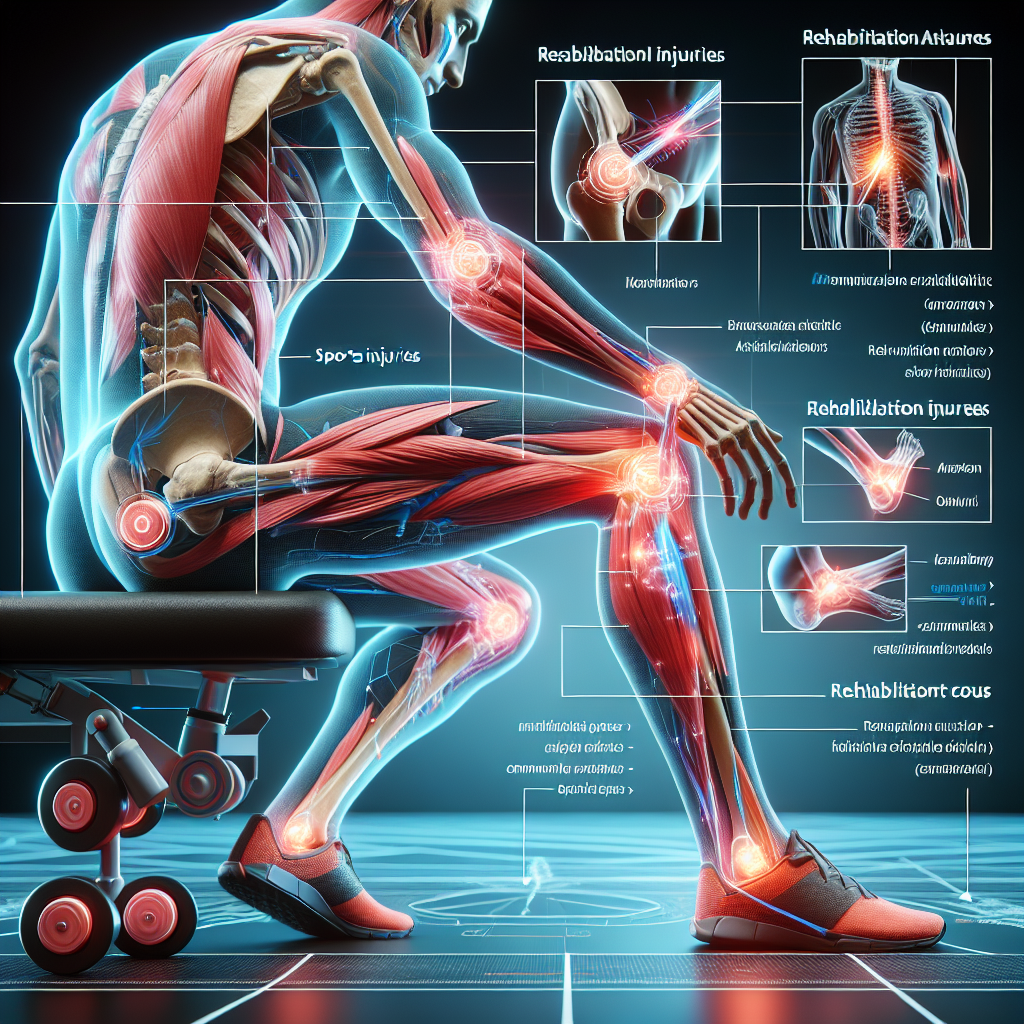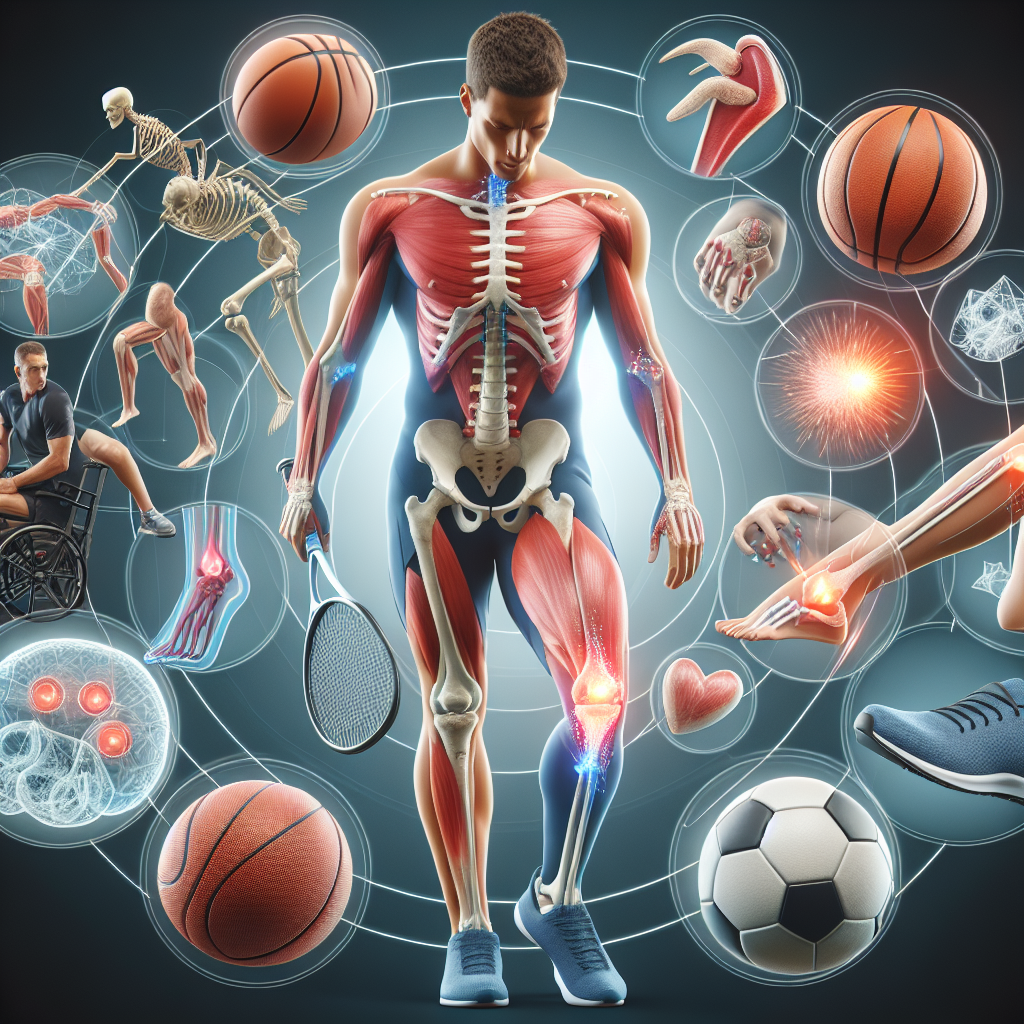
Understanding The Common Causes Of Sports Injuries At Sports Medicine Houston
Sports injuries pose a significant threat to athletic performance and overall health. Recognizing the various factors that contribute to these ailments is imperative for effective injury prevention.
Improper training techniques often lead to excessive strain on muscles and joints, resulting in sports injuries.
Biomechanical issues can also predispose athletes to various injuries, highlighting the importance of proper athletic training.
Incorporating appropriate warm-up and cool-down practices is necessary to mitigate risks and enhance injury prevention strategies. Environmental factors and equipment quality further influence the likelihood of injury.
By understanding these contributing factors, athletes can improve their approach to maintaining optimal performance while minimizing injury risk.
Click here to learn more about: sports medicine.html
Common Types Of Sports Injuries
Experiencing injuries can be a significant setback for those engaged in physical activities. Athletes frequently face soft tissue injuries, which involve sprains and strains impacting muscles and ligaments.
Fractures are another common issue, often resulting from high-impact trauma or repetitive stress, leading to various degrees of injury.
Overuse injuries, including tendinitis and bursitis, stem from repeated motions, causing inflammation that may hinder performance.
Joint injuries, such as dislocations and cartilage tears, can complicate recovery and rehabilitation. Awareness of these injury types aids in effective pain management and recovery strategies.
Sports Medicine Houston emphasizes the importance of injury assessment to tailor rehabilitation plans and promote a smoother return to activity. Transitioning to the next topic, it is crucial to consider what the main risk factors are that contribute to these injuries.

What Are The Main Risk Factors
Recognizing risk factors associated with sports can greatly enhance athlete safety and performance. Muscle strain often stems from various influences, including an athlete’s age and previous injuries, which shape their injury risk profile.
Joint health is also impacted by environmental conditions, such as the quality of playing fields and weather, affecting both performance and susceptibility to injuries.
Using appropriate equipment is fundamental for preventing harm on the field.
Psychological aspects like stress and motivation can alter training intensity, potentially leading to tendonitis. A comprehensive approach to these factors, including insights from experts at Sports Medicine Houston, promotes better overall athletic performance and helps mitigate risks.
| Risk Factors | Impact on Athletes |
|---|---|
| Age | Affects injury risk profile |
| Previous Injuries | Increases susceptibility to future injuries |
| Environmental Conditions | Influences joint health and performance |
| Psychological Factors | Can lead to increased training intensity and potential injuries |
Importance Of Injury Assessment
Evaluating injuries plays a significant role in facilitating recovery and enhancing athletic performance. Through precise assessments, healthcare professionals can design tailored treatment strategies that address individual needs, particularly during episodes of acute injuries.
For instance, case studies from Sports Medicine Houston demonstrate how accurate evaluations have contributed to successful rehabilitation from various sprains.
Early identification of underlying issues can help mitigate the risk of overuse injuries, allowing athletes to focus on effective prevention strategies.
A comprehensive grasp of these elements empowers athletes to return safely to their respective sports, transitioning seamlessly into understanding biomechanics in sports to further refine their performance.
Understanding Biomechanics In Sports
Analyzing movement mechanics can significantly enhance athletic performance. It delves into how body motions influence efficiency and effectiveness during physical activities.
A comprehensive comprehension of these principles can aid in crafting effective recovery techniques that help prevent injuries by pinpointing poor movement patterns.
For example, runners often develop shin splints due to flawed techniques.
By applying exercise science, professionals can devise personalized rehabilitation strategies that address specific issues faced by athletes. Injury diagnosis benefits greatly from this mechanical insight, ensuring individuals can safely return to their sport.
Ultimately, a thorough approach to motion mechanics lays the groundwork for enhancing performance and promoting sports health, as exemplified by the initiatives at Sports Medicine Houston.
Effective Injury Prevention Strategies
Maintaining optimal performance requires a proactive approach to safeguarding physical well-being. Developing a comprehensive warm-up routine is a fundamental aspect of any effective plan.
This routine should incorporate dynamic stretching and mobility exercises, which enhance flexibility and prepare the body for physical activity.
Mastering sport-specific techniques is vital, as proper form minimizes the risk of injury during common movements.
Athletes should engage in conditioning programs that focus on these prevention strategies. Implementing these practices can significantly improve overall athletic performance and reduce the likelihood of setbacks during training or competition.
Sports Medicine Houston emphasizes the importance of tailored programs that help athletes stay healthy and perform at their best. This preparation not only supports physical performance but also lays the groundwork for effective recovery, as will be discussed in the next section.
Role Of Sports Medicine In Recovery
Recovery is a fundamental aspect of an athlete’s journey back to optimal performance levels. The field of sports therapy is instrumental in designing personalized strategies that cater to individual injury mechanics.
Through detailed evaluations, professionals assess unique movement patterns to create targeted therapeutic interventions.
These specialized exercises focus on promoting healing and restoring function.
An interdisciplinary team approach ensures comprehensive care, covering everything from physical rehabilitation to psychological support. Collaboration among healthcare practitioners is key, demonstrating the effectiveness of sports therapy in facilitating a smoother recovery process.
As athletes transition from effective injury prevention strategies to managing acute injuries, the guidance of sports medicine professionals is invaluable.
Recovery in Sports Therapy
- Personalized recovery strategies enhance healing by addressing individual injury mechanics.
- Detailed evaluations of movement patterns lead to targeted therapeutic interventions.
- An interdisciplinary approach ensures comprehensive care, including physical and psychological support.
- Collaboration among healthcare practitioners improves the effectiveness of recovery processes.
How To Manage Acute Injuries
Prompt response to injuries is crucial for effective recovery. Recognizing symptoms such as pain or swelling is the first step in addressing the situation.
Following the R. I. C. E.
Method—Rest, Ice, Compression, and Elevation—can significantly reduce damage and set the stage for healing.
Professional assistance is advisable, particularly from specialists in Sports Medicine Houston, who can deliver an accurate diagnosis and create a tailored treatment plan. Incorporating flexibility training into your recovery regimen will enhance your physical capabilities and expedite the healing process.
Early proactive measures and tailored recovery strategies notably improve long-term health benefits.
Benefits Of Sports Physiotherapy
Engaging in physical activity requires a comprehensive approach to maintain optimal health and performance. Sports physiotherapy contributes significantly to an athlete’s well-being through various recovery protocols designed to enhance healing.
These tailored approaches effectively address common injuries and focus on personalized care.
Enhanced Recovery Time:
It accelerates the healing process for sports injuries, utilizing targeted therapies that cater to individual needs.
Improved Performance:
Specialized techniques integrated into training can substantially boost athletic capabilities.
Emphasizing strength, flexibility, and endurance training is effective in preventing recurrent injuries.
Athlete education is necessary, especially for those transitioning to effective conditioning programs that promote safety and performance.
This ensures athletes are well-prepared to handle their physical demands while maintaining peak performance.
Orthopedic care, recovery protocols, athlete education, and warmup routines.
Sports Physiotherapy
- Sports physiotherapy can reduce recovery time by utilizing targeted therapies tailored to individual athlete needs.
- Incorporating specialized techniques into training programs can enhance athletic performance significantly.
- Strength, flexibility, and endurance training are key components in preventing recurrent sports injuries.
- Educating athletes on effective conditioning programs is essential for maintaining safety and optimizing performance.
Conditioning Programs For Injury Prevention
Maintaining optimal performance while ensuring athlete health is paramount. Conditioning initiatives play an important role in enhancing strength and developing a wider range of motion.
Incorporating strength training builds muscle resilience and addresses various risk factors linked to athletic endeavors.
Flexibility exercises significantly contribute to injury prevention, improving the body’s capability to adapt to diverse movements.
Implementing cooldown strategies after workouts is crucial for effective recovery and reducing injury risks. In the context of comprehensive athlete care, facilities like Sports Medicine Houston provide essential support for athletes aiming to prioritize safety practices, helping them remain competitive throughout their training seasons.
Transitioning from conditioning programs, it’s equally critical for athletes to establish essential warmup routines to further enhance their performance and reduce the likelihood of injuries.
Essential Warmup Routines For Athletes
Engaging in a well-structured preparatory routine is crucial for athletes aiming to optimize performance and minimize harm. Tailored practices are designed to ready the body for intense activity, enhancing rehabilitation strategies and flexibility.
These routines significantly aid tissue healing and play a role in reducing the risk of chronic injuries.
Consistent efforts in warming up ensure all muscle groups are effectively engaged.
Effective warmups should incorporate dynamic stretches and sport-specific drills, which are instrumental in improving blood flow and stimulating muscle readiness. Athletes are encouraged to regularly evaluate their routines for effectiveness.
Incorporating management techniques into training can yield better performance results, contributing to overall success. Facilities like Sports Medicine Houston can provide valuable insights and guidance on developing appropriate routines to support athletic endeavors.
Top 10 WarmUp Exercises To Prevent Injuries At Sports Medicine Houston
Sports Injury Prevention At Sports Medicine Houston
